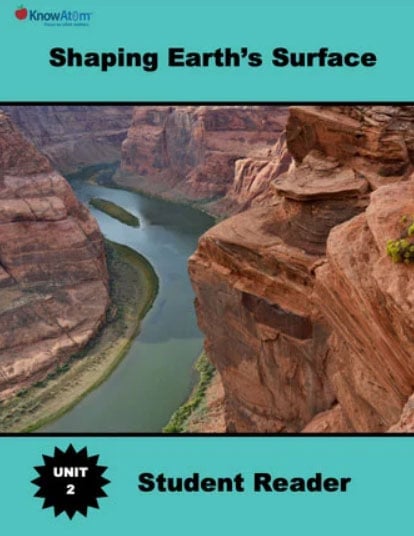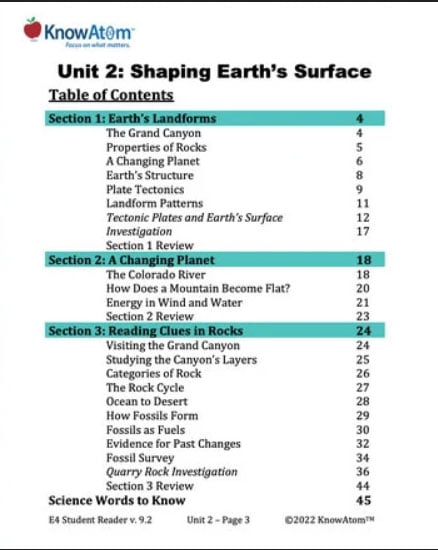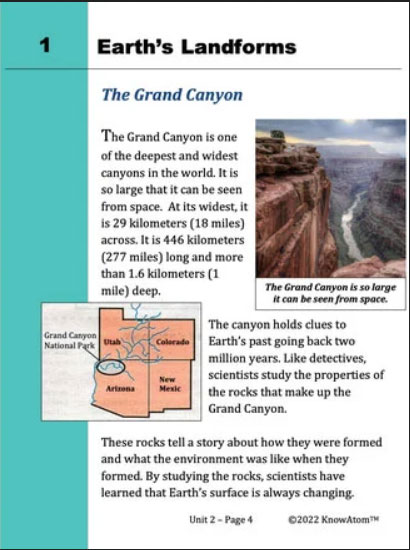The teacher background section gives educators more in-depth information on the phenomena students explore in this unit. Here is an excerpt from the science background information for this lesson on plate tectonics and landform patterns.
The interactions of Earth’s layers explain how a seabed could become a plateau rising high into the air. The hot magma in Earth’s mantle is constantly moving. Hot magma rises and cool magma sinks, causing a powerful circular motion called convection.
Convection happens because as an object is heated, its particles move faster, becoming more spread out and less dense. In a fluid such as air or water, the warmer fluid rises, allowing cooler, denser fluid to take its place. As the warmer fluid rises to the cooler area, its particles begin to cool, slowing down and clumping together, becoming denser. As the particles become denser, they sink. This causes a tumbling motion.
As the mantle moves because of convection, it carries with it the pieces of the lithosphere. These drifting slabs of solid rock that make up Earth’s surface are called tectonic plates, and they are constantly moving and interacting. The places where the tectonic plates meet are called fault lines.
The energy that powers convection in Earth’s mantle causes the tectonic plates to move extremely slowly—no more than a few centimeters a year, although the different plates move at varying speeds and in different directions. Scientists continue to study the complex behaviors of the plates, which sometimes crash together, pull apart, or sideswipe each other. Volcanoes and earthquakes, as well as mountain ranges and islands, all result from this movement.
When two plates move away from each other perpendicular to the fault line, they form a divergent boundary. This movement creates ocean ridges and rift valleys, and may result in earthquakes and magma welling up onto the surface.
When two plates move toward one another perpendicular to the fault line, they form a convergent boundary. When two plates converge on eachother, sometimes one of the plates sinks under another plate. This is called subduction—the process that occurs when two plates crash into eachother and the edge of the heavier plate slides beneath the lighter one.
The heavier crust melts back into the Earth's mantle, becoming magma. As it melts, some of it returns to the surface as volcanoes and lava flows, creating volcanic mountain ranges. When two continental plates converge on one another, neither is subducted because both plates are relatively light. Instead, the force is so powerful that the land is uplifted and mountain ranges form.
Sometimes plates slide past one another parallel to each other. This happens at transform plate boundaries, and it results in the plates grinding along their sides as they go. As they rub against each other, the tremendous amount of friction causes earthquakes.








